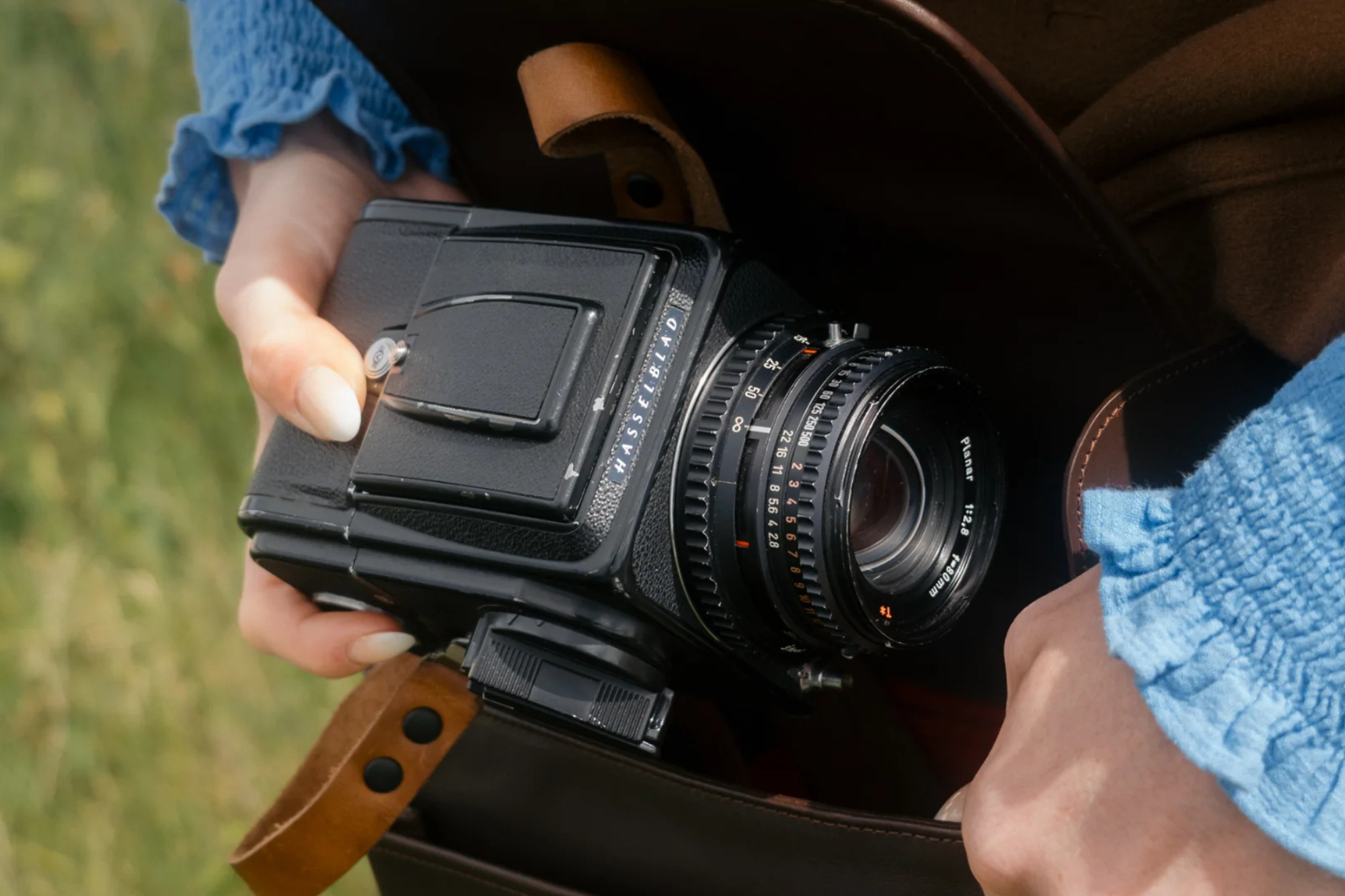
The Hidden Roots of the Hasselblad 500C/M: Its Bond with Music
The Untold Story of the Hasselblad 500C/M and Music
The Hasselblad 500C/M. If you’ve dabbled in photography, you’ve probably heard the name. Launched in 1957, this legendary medium-format camera won over professionals with its precision, iconic 6×6 format, and rock-solid reliability—a reputation that still stands today.
Many know it as the camera that went to space, carried on NASA’s Apollo missions. Others see it as a tool for elite portrait and commercial photographers. But the 500C/M has a lesser-known side: its deep connection to music.
Behind the scenes of rock’s golden era, on iconic album cover sets, and in the charged moments between artist and photographer, the 500C/M captured more than images—it captured history. Some of music’s most defining visuals were framed through its viewfinder.
In this article, we’ll uncover how the 500C/M left its mark on music history, acting as a bridge between photography and the soundscapes of a generation.

The 500C/M’s Role in the Music Scene
The Hasselblad 500C/M was more than a camera—it became the eye that captured rock’s iconic moments. In the 1960s and ’70s, UK photographers used it to shoot legendary artists like the Rolling Stones and Jimi Hendrix.
Its 6×6 format perfectly matched the square LP cover, making it ideal for album photography. The camera’s precision and film quality also captured subtle details, turning album covers into artworks that defined an era.
Beyond a tool, the 500C/M was a creative partner, shaping moments that remain central to music history. Even today, its images continue to represent rock culture’s most iconic scenes.
Artists and the Camera
The Hasselblad 500C/M wasn’t just valued for its image quality—it shaped the energy of the moment. Handling it required deliberate movements: lens changes, film winding, peering through the viewfinder. This careful ritual gave photoshoots a sense of ceremony, and the camera itself added presence and tension.
It also fostered a subtle connection between photographer and artist. Shared glances, timing, and even the weight and shutter sound of the 500C/M created a rhythm, like an improvised session, influencing expressions and poses naturally.
In this way, the 500C/M went beyond being a tool—it became a creative partner, helping capture some of rock’s most iconic shots through the invisible “performance” between camera, subject, and photographer.
Shutter Sound and the Shooting Experience
The charm of the Hasselblad 500C/M went beyond looks or mechanics, its shutter sound shaped the entire shoot. The crisp, resonant “click” set a rhythm on set, like a musical cue, helping photographers and artists focus and sync with the moment.
Operating the camera, from winding film to peering through the viewfinder to pressing the shutter, created a deliberate shooting rhythm, almost like an improvised performance. Artists often responded instinctively, their expressions moving in step with this “invisible music.”
In this way, the 500C/M was more than a recording tool; it was a performer in its own right, using analog sound and movement to shape the atmosphere, turning every session into a harmonious collaboration.
The Resonance of Photography and Music
One reason the 500C/M became central to music culture is the shared rhythm and immediacy of photography and music. Just as music weaves emotion through melody and beat, the 500C/M captures fleeting moments of light and shadow, turning them into a visual rhythm.
The shutter sound and deliberate handling make shooting feel like a musical performance. Movements of the hands, film winding, and the timing of the shutter create a subtle tempo on set, which artists instinctively follow, forming an invisible session between photographer and subject.
The 6×6 format adds stability and compositional rhythm, producing visual harmony much like repeated musical phrases. Photography becomes a moment of creative resonance, linking the flow of music with visual expression. Through this, the 500C/M acted as a bridge, transforming shoots into collaborative performances that live on as iconic album covers and legendary concert images.

Modern Reappraisal
Even in the digital age, the Hasselblad 500C/M remains beloved by photographers and music professionals. Its appeal isn’t nostalgia—it’s the analog experience: the shutter sound and deliberate handling create a tactile, immersive rhythm that digital cameras can’t replicate.
Today, album cover shoots and music visuals still draw inspiration from the 6×6 format and the camera’s unique shutter cadence. Photographers and artists value the momentary tension and live feel it brings, often returning to analog to capture what digital cannot.
The 500C/M is also celebrated as a symbol of music history, with iconic shots of the Rolling Stones and Jimi Hendrix continuing to inspire modern creators. Even now, it stands as a bridge between music and photography, a timeless tool that keeps their resonance alive.
Conclusion
The Hasselblad 500C/M is more than a legendary medium-format camera—it was a creative partner in music, enhancing artists’ presence and shaping iconic visuals. From Rolling Stones and Jimi Hendrix shots to LP covers, it bridged photography and music.
Its unique shutter sound and deliberate handling transformed shooting into a musical experience, creating an improvisational rhythm that involved photographer, artist, and audience alike.
Even in the digital age, the 500C/M remains cherished by creators seeking the tactile, expressive qualities of analog. It reminds us that photography and music, though different forms, resonate through rhythm and moment. Ultimately, the 500C/M transcends being a tool—it is a timeless performance connecting sight and sound.











